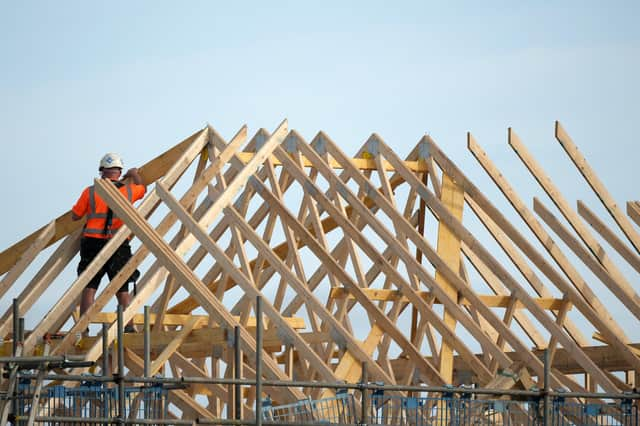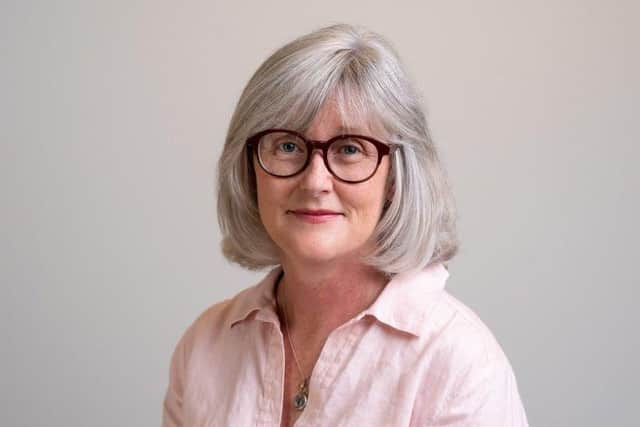The Scottish housing sector can build back better - Diana MacLean


Those of us in the Scottish housing industry would do well to ask ourselves the question from the second half of this statement.
Earlier this year exclusive analysis by Riverside Scotland for The Scotsman showed that the number of new homes built in Scotland has fallen to the lowest level for more than 70 years. The number of new homes fell by more than a third in 2020.
Advertisement
Hide AdAdvertisement
Hide AdDuring the first lockdown in Spring 2020, building sites were closed and projects fell behind. Funding streams dried up and projects were left unfinished. As with many other sectors in our economy, housebuilding slowed down with the disruption on people’s lives.


The figures show that there were 14,834 new dwellings added to the national housing stock in 2020. That was down from 22,673 in 2019, and put an end to three years of increases. Local authorities and housing associations in Scotland completed 4,200 new-build homes, down 28.9 per cent from 2019.
The impact of the pandemic has certainly been felt within the housing sector, but the concern is that a failure to recover from the downturn of 2020 could have a long-term effect on the availability of housing across Scotland.
Last year the Scottish government unveiled its new 20-year housing strategy which included plans to deliver 100,000 affordable homes over the next decade, with at least 70 per cent of these for social rent.
At a time where the cost of living continues to rise, it is vital that affordable housebuilding recovers from the lows of the pandemic.
The housing crisis doesn’t just affect buyers and sellers. It creates a widening chasm of affordability on the price of putting a roof over your head.
It is estimated that around 8 per cent of the Scottish population has experienced homelessness. If the pandemic-induced housebuilding lows of 2020 are not addressed, this number could sadly rise.
As an organisation we are keen to play our part to help the Scottish Government build back better.
Advertisement
Hide AdAdvertisement
Hide AdWe currently own 2,300 homes across Scotland, but we have exciting plans to build 100 new homes per year over the next three years, increasing our social housing stock by 13 per cent.
Across the UK, Riverside’s own housebuilding reduced by 24 per cent in 2020/21 compared to 2019/20, mainly due to the impact of site closures during the Covid lockdowns.
However, within our own organisation we are predicting a bounce back in housebuilding of 95 per cent in 2022, which for us represents an increase in housebuilding of 48 per cent against 2019 levels.
Currently, we have three projects, delivering a total of 190 homes under construction, with support from the Scottish Government.
Despite our small size in Scotland, thanks to the financial backing of The Riverside Group we are currently building Scotland’s largest social modular housing development to date in Dundonald, South Ayrshire.
The ground-breaking £9.8million project is being delivered in collaboration with Connect Modular, part of The Wee House Group and will provide 63 much-needed affordable homes in the village. The project is due to be completed in Autumn 2022.
As part of our commitment to improve the availability of housing stock in Scotland, we are heavily focused on our role to help the Scottish Government deliver more affordable homes for people to live.
The lockdowns of 2020 and 2021 disrupted housebuilding up and down the country, and had a knock-on effect for those stuck in private rental or temporary accommodation.
Advertisement
Hide AdAdvertisement
Hide AdAs an industry we must be bold in our efforts to tackle Scotland’s housing crisis.
Together we can overcome this 70-year low in housebuilding.
Scotland’s post-war recovery was met with a surge in development across major towns and cities. In the 1950s, social housing transformed Glasgow’s chronic housing crisis of the day, accounting for 35 per cent of homes in the city by 1960.
As we recover from the disrupted years of the pandemic, it is time for all of us in the housing sector to push on with plans to build high-quality new homes support and help support the Scottish Government to tackle the housing crisis.
c
Diana MacLean is managing director of Riverside Scotland
Comments
Want to join the conversation? Please or to comment on this article.